Cleaning Dippy the dinosaur skeleton requires much more than a quick flick with a duster. Exhibition specialist Helen Walker talks us through the task.
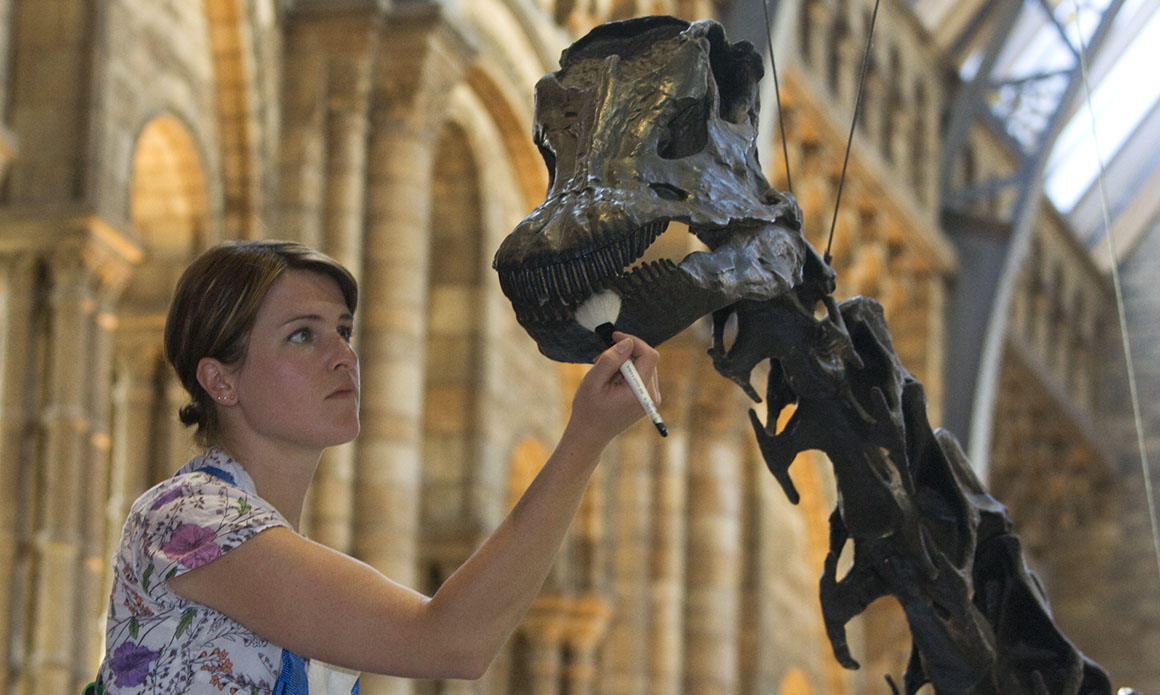
Exhibition specialist Helen Walker cleans Dippy with conservation-grade brushes
In the quiet of the evening, when all the Museum's visitors have gone home, Dippy the Diplodocus skeleton gets a regular clean.
Dozens of delicate plaster-of-Paris and resin bones have been kept spick and span for generations, ever since the replica skeleton arrived at the Museum in 1905.
But now, making sure the dinosaur was in good condition was more important than ever - Dippy had to look good for its tour of the UK, which began in 2018.
A dusty coat
The dinosaur was taken off public view in London in January 2017, when it had a thorough inspection and clean from Museum conservators.
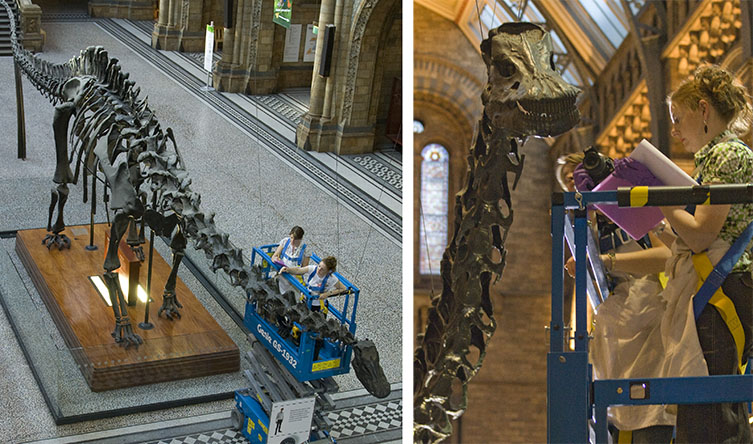
The dinosaur needs thorough cleaning to protect it from damage
It took a year for experts to prepare the specimen for the tour, which stopped at eight venues across the UK.
But specialists had been giving the dinosaur a polish twice a year for a long time.
One of them is Helen Walker, an exhibition specialist who works with the conservation team to help keep the Museum's permanent displays sparkling. She carefully removes dust from Dippy using a special vacuum and conservation-grade brushes with natural fibres.
Helen says, 'We usually clean the skeleton in the evening because it is a long job that can't be rushed.
'It needs a good clean twice a year because a layer of dust forms from the sheer number of visitors that Dippy gets.'
A delicate giant
The job means that Helen has seen Dippy from unusual angles.
Helen says, 'The amazing thing about cleaning that kind of specimen is that you can stand under the ribcage and get a feel for the size of the dinosaur. I also get to see the world from Dippy's perspective.'
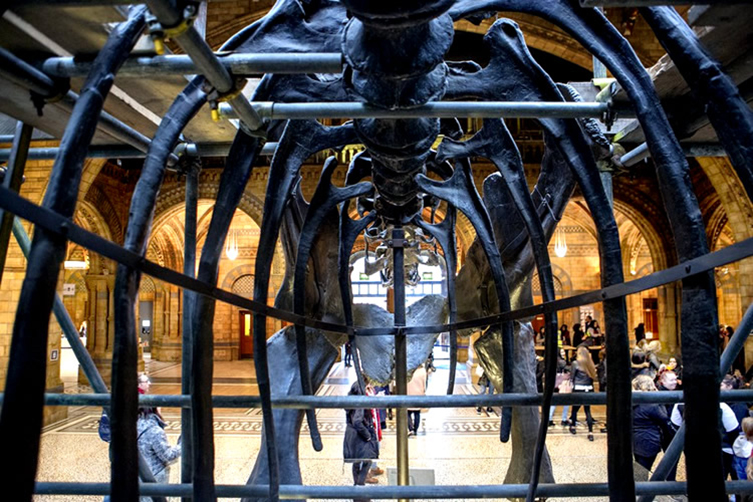
Cleaning the skeleton requires teams to work from strange angles
The skeleton is fragile in places, and it can be painstaking work to ensure no damage is done to the most vulnerable areas.
Helen explains, 'We used to use a scaffold, but now we use ladders and mobile platforms to reach the higher parts. Long brushes help us to get in between all the fiddly bits.
'The tail is particularly hard to clean because it stretches out so far, and vibrations can run all along it and expose cracks.'
The dinosaur's future
The Diplodocus was also inspected in 2016 by conservators Lorraine Cornish and Rob McLeod, to prepare for the dismantling of the huge specimen.
It was vital that the team knew in advance which parts of the dinosaur would be likely to pose problems for them, as it is will be taken down and reinstalled several times over the next few years.
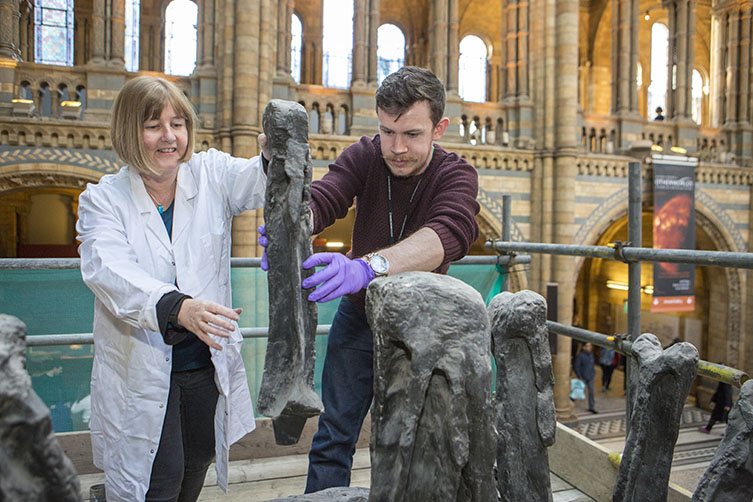
Lorraine Cornish and Rob McLeod inspect Dippy
Lorraine says, 'A conservation assessment of Dippy and its mount was needed so we can assess the condition of the skeleton cast and also look more closely at how it was originally assembled in Hintze Hall.
'One of the key areas to check was the pelvis, where there are large and heavy parts of the skeleton cast and lots of complex metalwork joining them.
'It was exciting and interesting to see that parts of the plaster vertebrae had been produced in sections and were able to come apart easily, which will help when we come to dismantle the specimen.'
Explore more
From 2018, Dippy embarked on a UK-wide tour, visiting Scotland, Wales, Northern Ireland and five regions across England.
The tour explored the UK's past, present and future natural history, helping young people to connect with the natural world and gain a deeper understanding of it through science.
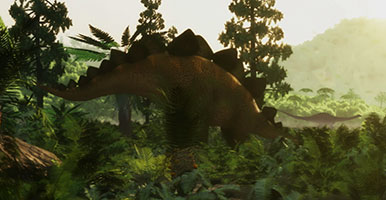
Discover dinosaurs
Find out what Museum scientists are revealing about how dinosaurs looked, lived and behaved.

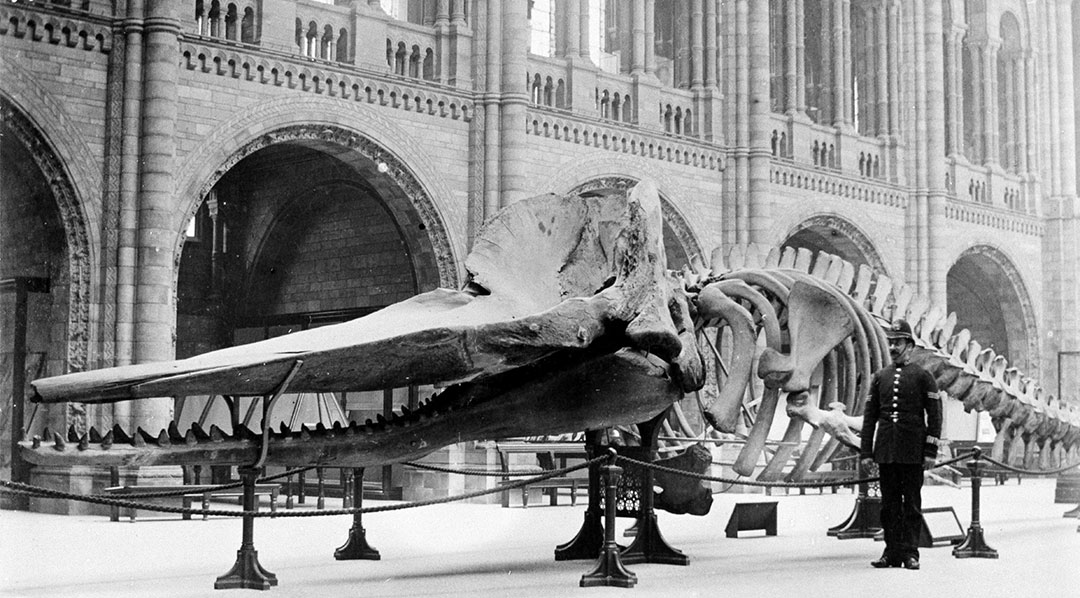
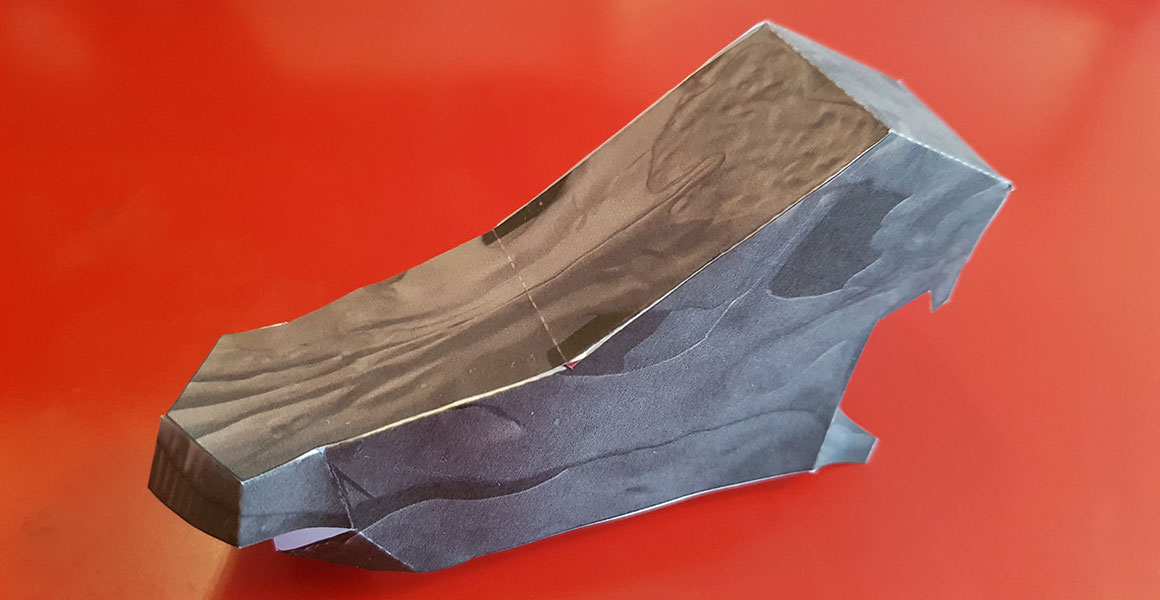
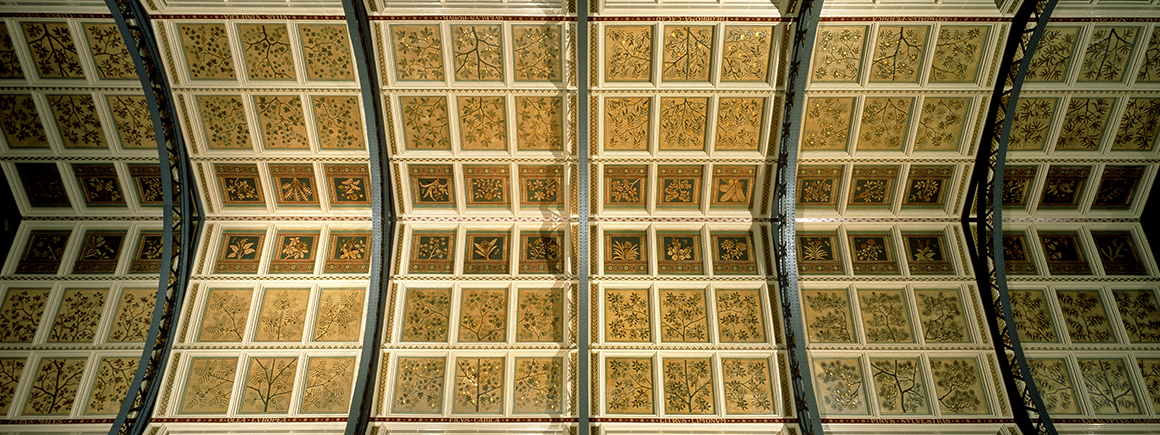
Don't miss a thing
Receive email updates about our news, science, exhibitions, events, products, services and fundraising activities. We may occasionally include third-party content from our corporate partners and other museums. We will not share your personal details with these third parties. You must be over the age of 13. Privacy notice.
Follow us on social media